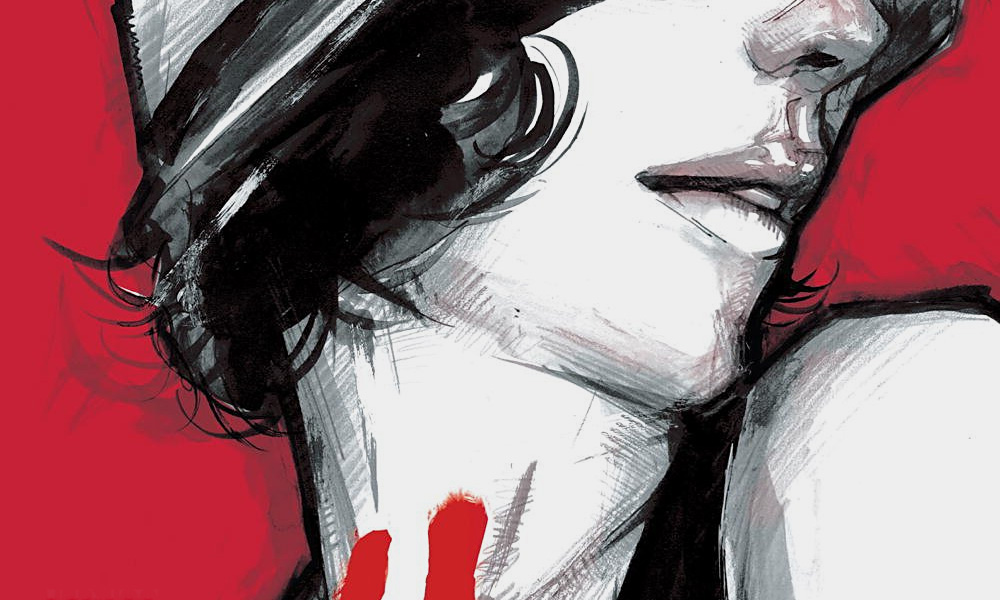Comic books have a reputation that tends to alienate people. Superhero comics have years of continuity behind them, keeping casual fans from being able to fully immerse themselves in the universe, since they have to jump on a fan-made Wiki every time Doc Ock references something Spider-Man did with the Fantastic Four back in 1972. Especially since that reference is a major plot point and character defining moment and the rest of the comic’s not going to make any sense without it. Add on the fact that the most vocal comics fans will shit all over you if you can’t recite Batman and Wonder Woman’s exact conversation from the third time they met for the first time, and there’s really no place for people to get into comics.
Except superheroes aren’t the only ones in comic books. There are so many great stories being told in graphic form that don’t include the Justice League or Avengers that you could spend years reading comics before you even tangentially encountered any of DC or Marvel’s mainstays. If you’re a fan of being entertained but thought you couldn’t get into comics, we respectfully disagree.

The Harlem Hellfighters
Written by Max Brooks
Illustrated by Caanan White
This is one thing for which we have to extend some thanks to Battlefield 1. Before we played it, we hadn’t heard much about the Harlem Hellfighters. But theirs is one of the more inspiring stories of World War 1 and people are finally starting to wake up to that. They were a regiment of black American soldiers based out of Harlem at a time when Harlem was basically the cradle of African-American culture in the country. As you’d expect, they faced insane amounts of prejudice in the segregated American forces, to the point where they were completely cut out of the US army and gifted to the French. Even through everything they faced, they became arguably the most effective American combat unit in history. If you need more proof, pick up the book and flip to Henry Johnson’s story. $16

March
Written by John Lewis and Andrew Aydin
Illustrated by Nate Powell
Congressman John Lewis is responsible for some of our favorite Stephen Colbert interviews, both on The Colbert Report and The Late Show. He’s a direct connection to the most important movement in modern United States history, as well as an American hero, and he’s ridiculously well-spoken, making for a great combination. March is an amazing retelling of John Lewis’s journey in the Civil Rights movement. He’s been both influential leader and simple supporter, so he has a complete understanding of what it’s like trying to instigate change. It’s an engaging story regardless of the current political climate and serves as an excellent primary source for people who are looking to expand their understanding of race relations in the United States. $38
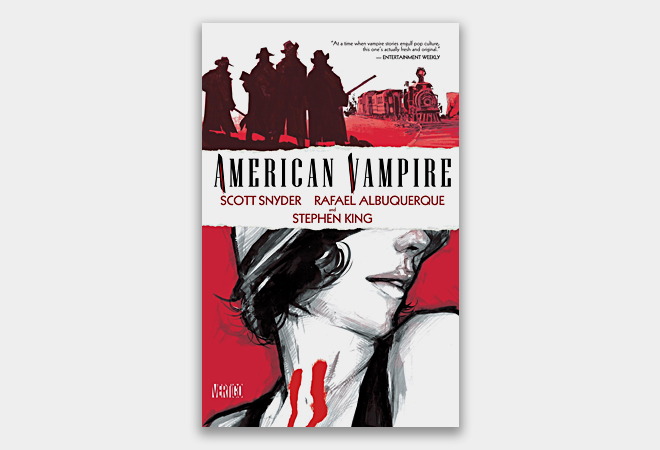
American Vampire
Written by Scott Snyder and Stephen King
Illustrated by Rafael Albuquerque
According to Stephen King’s introduction for the first collected volume of American Vampire, the series was Scott Snyder and King’s reaction to vampires being defanged by recent pop culture (no pun there, since that’s almost literally what happened). The two of them wanted to make vampires scary again. Which is exactly what happened. The blood-suckers in this series have serious physical deformations and augmentations when they fall fully into their vampire identity, and if you’re reading at night, or during a dark day, having some of these guys pop out of black panels can be enough to make you start keeping a suitcase of vampire hunting equipment under your bed. Snyder’s also delved deep into vampire mythology and built on plenty of his own, so these aren’t shallow stories cashing in on a vampire craze. Not many stories have foundations this strong and you have to respect that regardless of the medium. $16
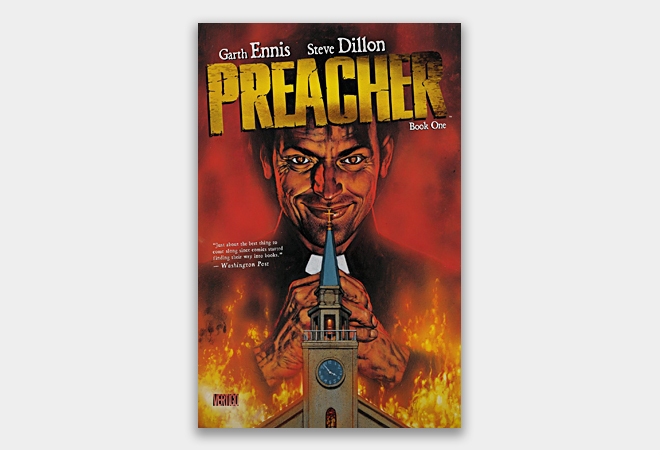
Preacher
Written by Garth Ennis
Illustrated by Steve Dillon
Preacher tells a classic story, the journey of a messianic hero with some friends, and puts an insane twist on it, injecting ultra-violence, irreverent humor, and memorable characters into the well-worn plot. This is storytelling as it should be, with the author completely unafraid to make decisions based on what makes sense for the narrative rather than what might bring in the biggest audience. Ironically, by doing so, Garth Ennis found a large and loyal fanbase that would carry his story through numerous reprints, adaptation attempts, and, eventually, AMC’s next best show. Of all the picks on this list, Preacher could be the most divisive, as well as the one most likely to prove how capable comics are of grounding larger than life stories into totally plausible situations. Complete Series

Maus
Written and Illustrated by Art Spiegelman
Maus is simultaneously about a Holocaust survivor’s experience under the Nazis and a man’s attempt to connect with his father, where both aspects enhance the other. This is a story of small and large tragedies, expertly told. The story would be powerful enough as a traditional novel, but Spiegelman’s choice to make a graphic novel allows him to take a few artistic liberties with how best to convey story. Namely, factions in the Second World War are represented by different animals, adding a literal display of cat and mouse for Nazis and Jews, respectively. It’s an extra layer of empathy added on that helps better communicate what it felt like to be Jewish in the mainland Europe of the 1930s and 40s. $20
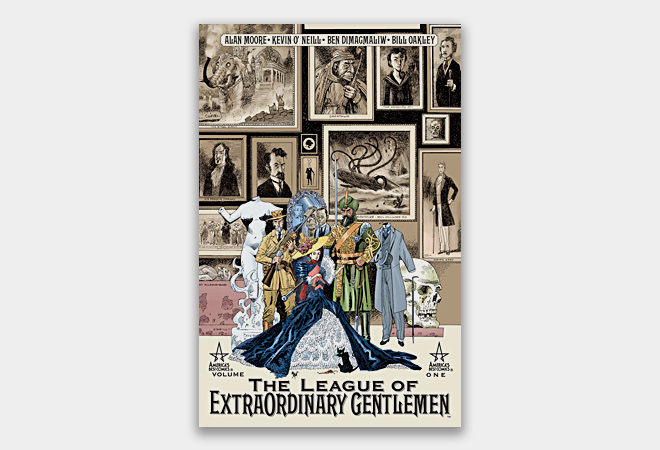
The League of Extraordinary Gentlemen
Written by Alan Moore
You’d be forgiven for cringing at this entry. But what we’re going to say undoubtedly copies what all your comic-loving friends already said. If you’re judging the books by the movie, you have it completely wrong. The movie’s main mistake was going for a PG-13 rating, as the books go much deeper into the more gruesome and deviant aspects of each character. For example, the movie has the Invisible Man surprise everyone in a well-appointed conference room. In the books, he’s impregnating young women at the Correctional Academy for Wayward Women, who all think they’re experiencing some kind of immaculate conception. Not a topic easily broached in a PG-13 movie. The comic’s also not worried about appealing to a large audience, so there’s no Tom Sawyer, Sean Connery’s character is basically a sidekick and both choices improve the story. $12
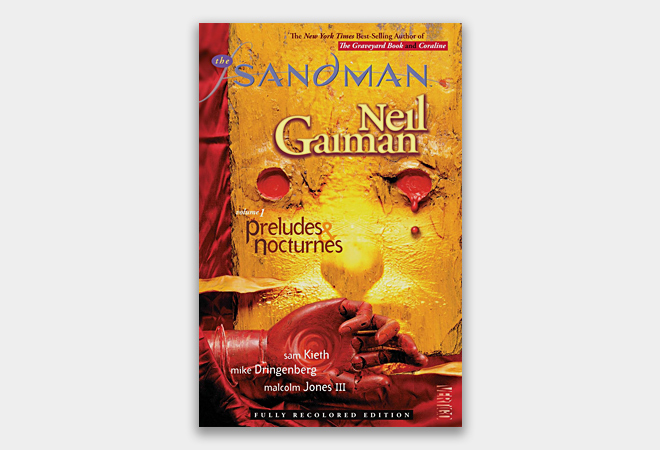
The Sandman
Written by Neil Gaiman
Illustrated by Sam Kieth and Mike Dringenberg
As far as we can tell, Neil Gaiman can write just about any form of entertainment. He’s had a hand in books, short stories, essays, television shows, films, plays, and all kinds of audio stuff. If you’re looking to get into comics and you’re already a Neil Gaiman fan, you have a leg up on everyone else trying to make the transition. The Sandman is Gaiman at his best, with the same mythological and supernatural elements that define his other work. Plus, in comic form, you get to actually see what Gaiman’s thinking, which might provide some insight into how his weird mind works. $17
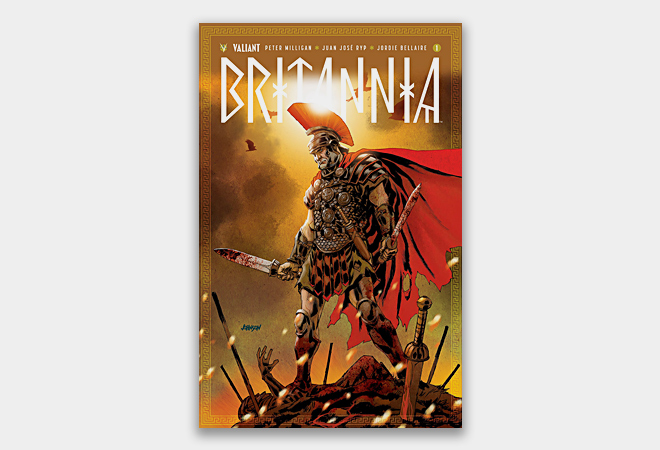
Britannia
Written by Peter Milligan
Illustrated by Juan Ryp and Raul Allen
Everyone sort of knows in the back of their mind that Roman soldiers made it into Britain, but we never hear about it beyond someone quickly mentioning Hadrian’s Wall in a History class. Outside of some of Ryse: Son of Rome (an acceptably entertaining video game that won’t age well or be remembered very long), Britannia is the first work of fiction we’ve found that actually ventures into ancient Britain. There’s a strong sense of the supernatural, as well as terror and suspense, which has to be what Roman Legionaries in Britain lived with every day. This is an exciting foray into relatively unexplored territory for all forms of fiction and is a great entry point for anyone who’s a fan of thrillers, both ordinary and supernatural. $8

Palestine
Written and Illustrated by Joe Sacco
When you think comic books, people don’t generally jump to nonfiction. Sure, we’ve already talked about Maus, but that’s the exception that proves the rule. It’s an outlier. But Joe Sacco is doing a lot of work to make it so journalistic writing isn’t such an alien concept to graphic novels. Palestine comes from Sacco’s time on the West Bank and in the Gaza Strip during the early 1990s, inspired by interviews with people from both sides of the conflict. Being more journalistic, Sacco does his best to convey information, not pick sides. If anyone feels like they need a crash course on Palestinian/Israeli relations, Palestine might be the most reliable source. $20

